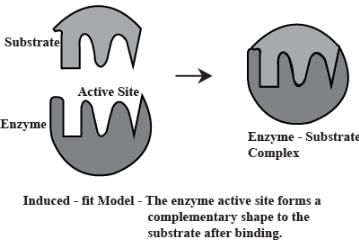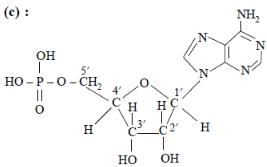Test: JEE Previous Year Questions- Biomolecules - JEE MCQ
25 Questions MCQ Test - Test: JEE Previous Year Questions- Biomolecules
The functional group, which is found in amino acid is -
[AIEEE-2002]
Complete hydrolysis of cellulose gives –
[AIEEE-2003]
The reason for double helical structure of DNA is operation of –
[AIEEE-2003]
Coordination compounds have great importance in biological systems, In this context which of the following statements is incorrect ?
[AIEEE-2004]
Which base is present in RNA but not in DNA ?
[AIEEE-2004]
Identify the correct statement regarding enzymes :
[AIEEE-2004]
In both DNA and RNA, heterocylic base and phosphate ester linkages are at –
[AIEEE-2005]
The pyrimidine bases present in DNA are –
[AIEEE 2006]
The term anomers of glucose refers to –
[AIEEE 2006]
The secondary structure of a protein refers to–
[AIEEE 2007]
α-D-(+)-glucose and β-D-(+)-glucose are
[AIEEE 2008]
The two functional groups present in a typical carbohydrate are :
[AIEEE 2009]
Which amino acid is achiral ?
[AIEEE-2009]
The presence or absence of hydroxy group on which carbon atom of sugar differentiates RNA and DNA ?
Which one of the following statements is correct ?
[AIEEE-2012]
Which of the following compounds can be detected by Molisch’s test ?
[AIEEE-2012]
Monomers are converted to polymer by –
[AIEEE-2003]
Nylon threads are made of –
[AIEEE-2003]
Which of the following is a polyamide ?
[AIEEE-2005]
Which of the following is fully fluorinated polymer-
[AIEEE-2005]
Bakelite is obtained from phenol by reacting with
Buna-N synthetic rubber is a copolymer of -
[AIEEE 2009]
The species which can best serve as an initiator for the cationic polymerization is
[AIEEE-2012]
Synthesis of each molecule of glucose in photosynthesis involves:
[AIEEE-2013]








 group includes aldehydic as well as ketonic group.
group includes aldehydic as well as ketonic group.











